Topic 2: Transmission and Prevention of HIV Infection
Understanding how HIV spreads and how to prevent it
HIV Prevention
Watch this short video for a quick overview of HIV transmission and prevention before diving into the detailed lesson below.
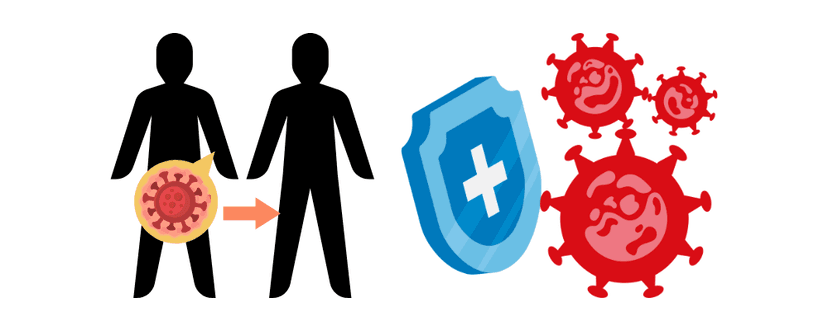
HIV Transmission
Transmission (noun) is the act or process by which something is spread or passed from one person or thing to another; [transmit (verb)]
For HIV transmission to occur, there are three FOURs that you must remember:
4 BODY FLUIDS that can transmit HIV
4 PRINCIPLES of HIV transmission
4 WAYS to transmit HIV
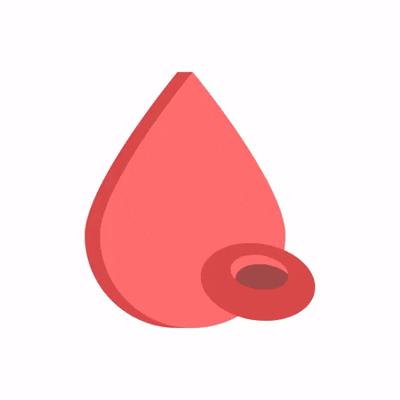


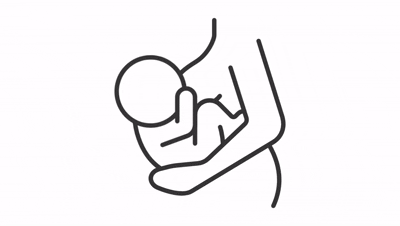
HIV transmission requires the exchange of body fluids containing the virus. In the body, there are 4 BODY FLUIDS that carry high concentrations of HIV. None of the usual daily interactions like talking, coughing, shaking hands, or hugging involve the exchange of blood, semen, vaginal fluids, or breast milk. Thus, you will not get infected with HIV through daily interactions with people with HIV.
The 4 Principles: E-S-S-E
For HIV to be successfully transmitted from a person with HIV to another person, it must meet the 4 PRINCIPLES: E-S-S-E.
Exit
HIV must exit the body of a person with HIV.
Survive
HIV must be in the right conditions to survive (factors include time outside the body, temperature, etc.).
Sufficient
Enough amount of the virus must be present.
Enter
HIV must enter the bloodstream of another person to infect him or her.
The body fluid containing HIV must first EXIT the body of a person with HIV. Once HIV exits the body, it must be in conditions in which it can SURVIVE. HIV is a virus. Just like all living things, HIV must be in the right environment to survive. Otherwise, it will not live long outside the human body.
Also, SUFFICIENT quantities of HIV must be present to cause infection. Blood, semen, vaginal fluids, and breast milk are the four body fluids that contain high concentration of the virus. Finally, HIV must ENTER the bloodstream of another person to infect him or her.
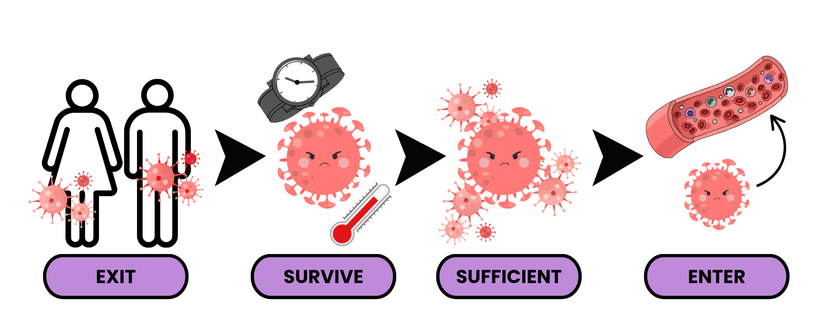
KEY CONCEPT
From the term HUMAN immunodeficiency virus (HIV) itself, HIV needs to be transmitted from one person to another person. It cannot be transmitted through mosquitoes or other animals. If mosquitoes bite a person with HIV, they cannot spread HIV because the virus is broken down in their stomach and therefore, does not survive in their bodies. Moreover, only the saliva of mosquitoes is involved when drawing blood from a host.
The principles of E-S-S-E are fulfilled and the virus is transmitted through 4 ways:
HIV is transmitted from an HIV-positive person to another person mainly through:
Fig 4
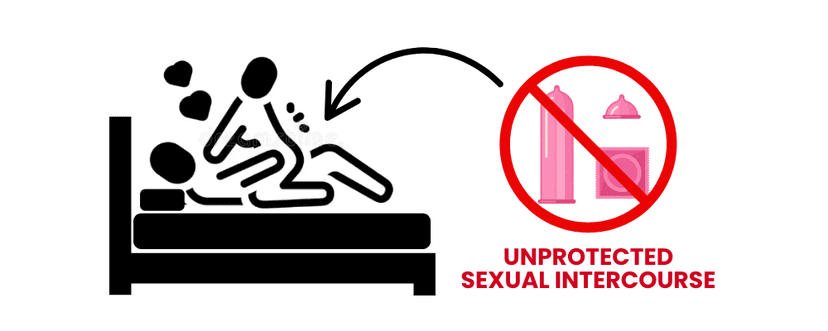
Unprotected sexual intercourse.
Most (95%) of the people diagnosed with HIV in the Philippines were infected through unprotected sexual intercourse (DOH, 2006-2016).
Sexual Abstinence (noun) is the practice of not having sexual intercourse; [abstain (verb)] Sa Tagalog: "hindi pakikipagtalik"
The ABCDE of HIV Prevention
To easily remember how HIV may be prevented, remember the A-B-C-D-E.
Abstain from sexual intercourse
Having sexual intercourse facing the serious consequences of possible pregnancy/parenthood or getting sick. When you decide NOT to have sexual intercourse before you are ready, you allow yourself to fully enjoy your youth. You do not have to worry about unplanned pregnancy, HIV, STI, or complicated emotional issues. You can focus on achieving your goals instead. Since you and your partner both have your future ahead of you, having sexual intercourse is a decision you should make carefully.
Abstinence is the MOST EFFECTIVE METHOD of preventing HIV. Think about delaying your first sexual activity until you are ready. It is OK to say NO.
To help you say NO, remember:
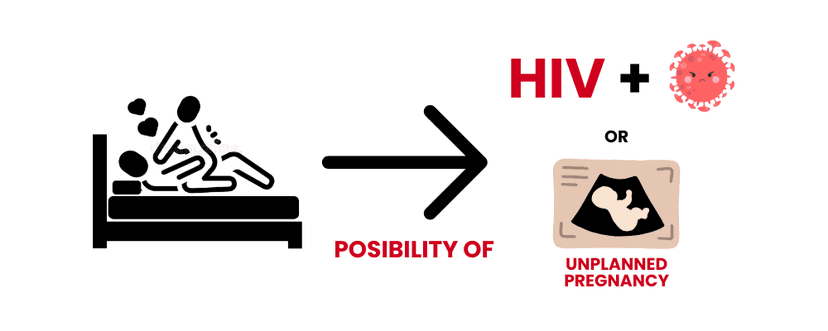
S
Stay away from situations which can lead to risky behaviors.
T
Team up with peers who also want to make the right choices and spend more time with them.
O
Occupy your time with activities that would benefit your future.
P
Practice saying "No" in a convincing manner.
Be faithful to one partner who is also faithful to you
Having sexual intercourse with several people puts you at higher risk of having HIV so avoid having many sexual partners.
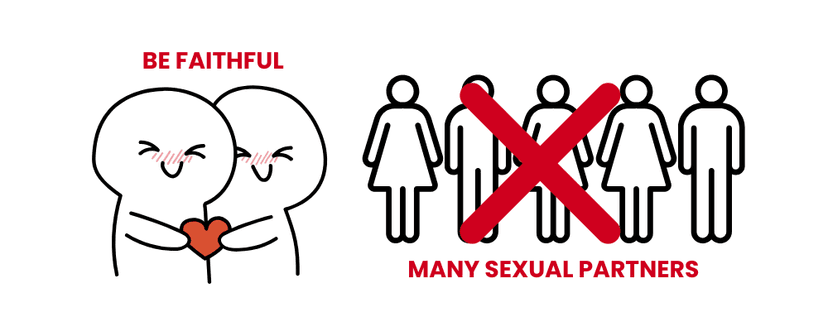
However, no matter how faithful you are to each other, if one already has HIV, and you have sexual intercourse without using a condom, it still puts the other partner at risk of HIV infection. You should know your HIV status and the HIV status of your partner. Your HIV status can only be determined by getting an HIV test.
Once you make the decision to have sexual intercourse, there are responsibilities that you and your partner must understand. These include the prevention of HIV, STI, and unplanned pregnancy.
Correct and consistent use of condoms
Correct and consistent use of condoms is a reliable method to prevent the spread of HIV, as well as other sexually transmitted infections (STI). It is one of the most widely available and highly effective HIV prevention tools. Condoms also prevent unplanned pregnancy. However, abstinence remains more effective than the use of condoms in preventing pregnancy, HIV infection, and STI.
Correct. Condom use is a skill. There is a correct way of using condoms. They also have expiration dates so always check the package. Do not store condoms in your wallet for a prolonged period of time and do not expose them to direct sunlight.
Consistent. Condoms must be used in EACH sexual act during ANY type of sexual intercourse (vaginal, anal, and oral) and with ALL sex partners.
Male condoms are used more often in the Philippines but female condoms are also available.
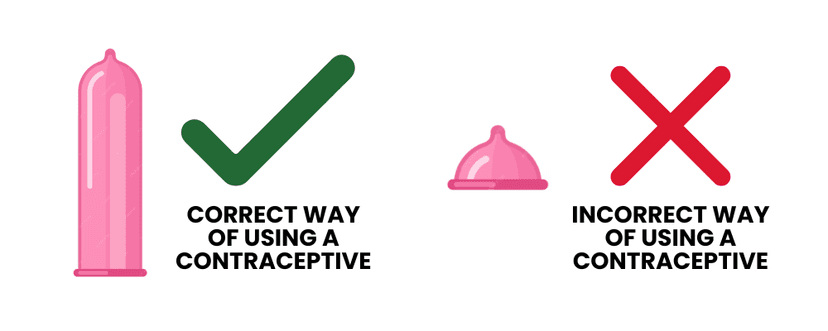
Fig 10
Do not use drugs or drink alcohol
These substances may affect your thinking and decisions. Prohibited drugs and alcoholic drinks may make you do things that you might regret later on. Moreover, injecting drugs using a needle used by an HIV-positive person presents a very high risk for HIV transmission.
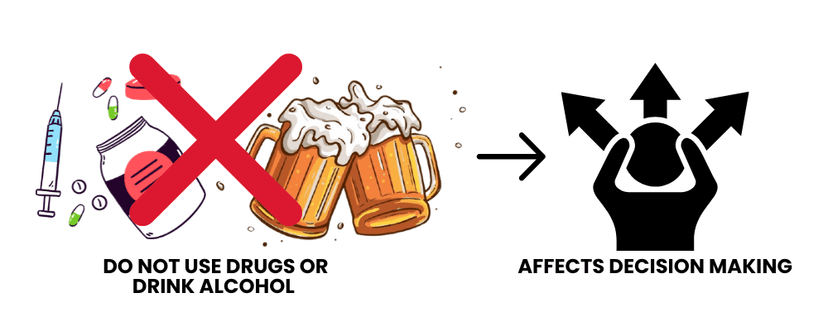
Fig 11
Education and early detection
There is no better protection than proper knowledge. Get the facts on HIV and do not be embarrassed to share what you have learned with your friends. Sharing your knowledge may allow you to save a friend's life.
Aside from getting proper knowledge about STI and HIV, it is also important to know if you are infected by getting tested for HIV. There are many public and private facilities which offer HIV testing. Social Hygiene Clinics (SHC), sometimes referred to as City Health Office (CHO) or Reproductive Health and Wellness Center (RHWC), offer free HIV testing and treatment, and can be found in most cities.
Pregnant mothers are encouraged to get tested for HIV. Early diagnosis of HIV will allow the mother to get antiretroviral therapy (ART) to prevent transmitting HIV to her unborn child.
Knowing your HIV status early will allow you to protect yourself and others. Do not be shy or scared to get an HIV test.

Fig 12